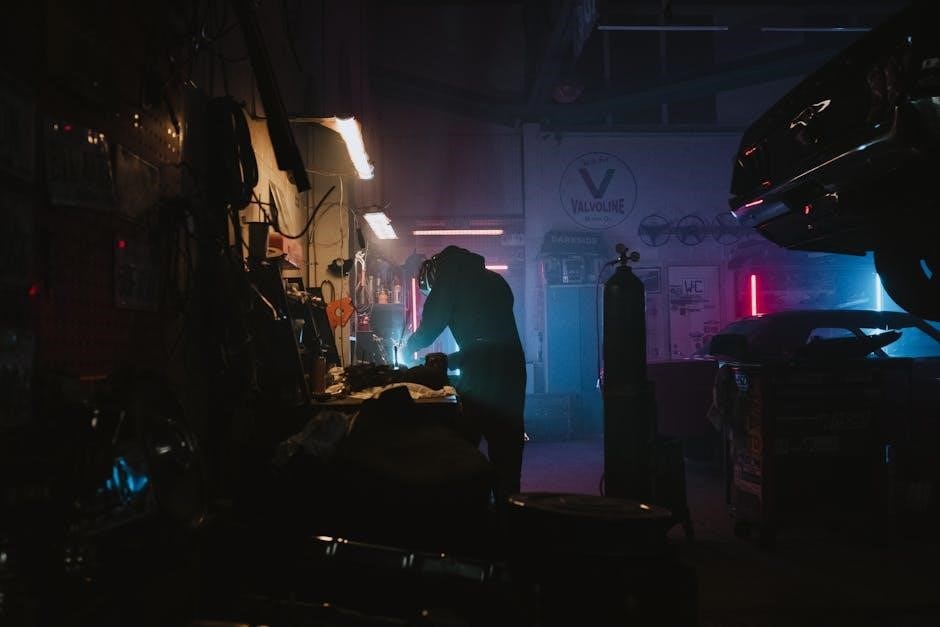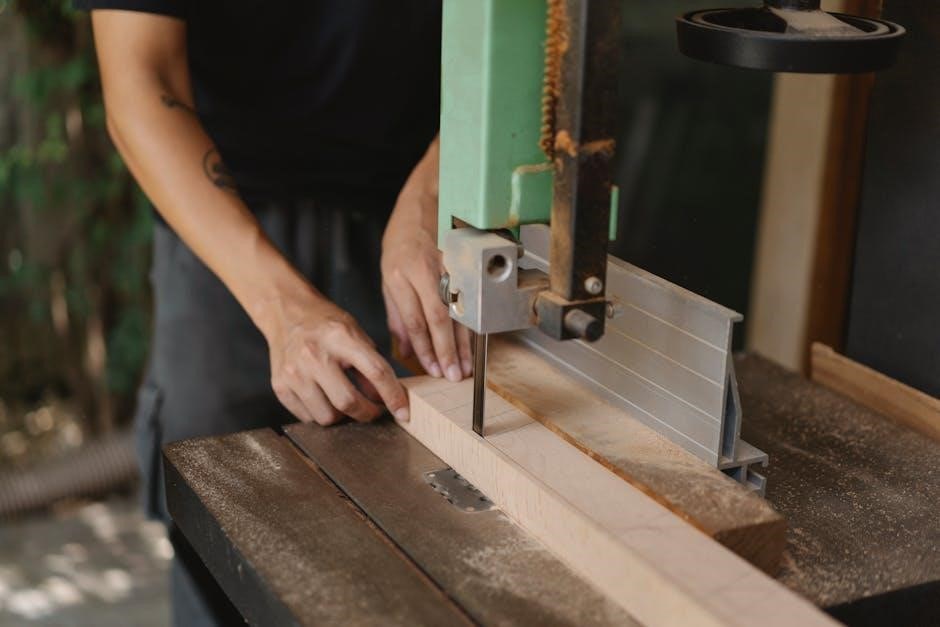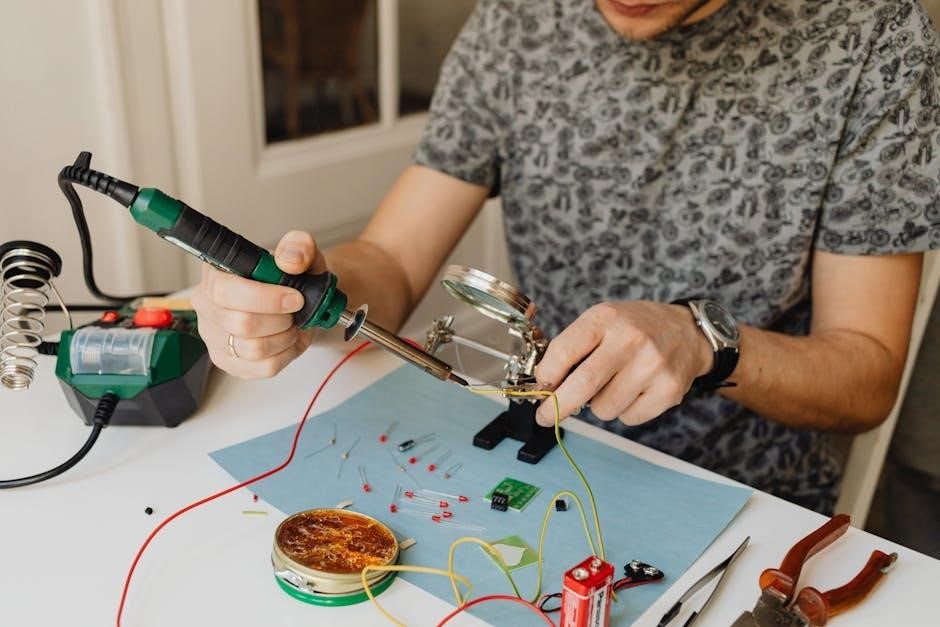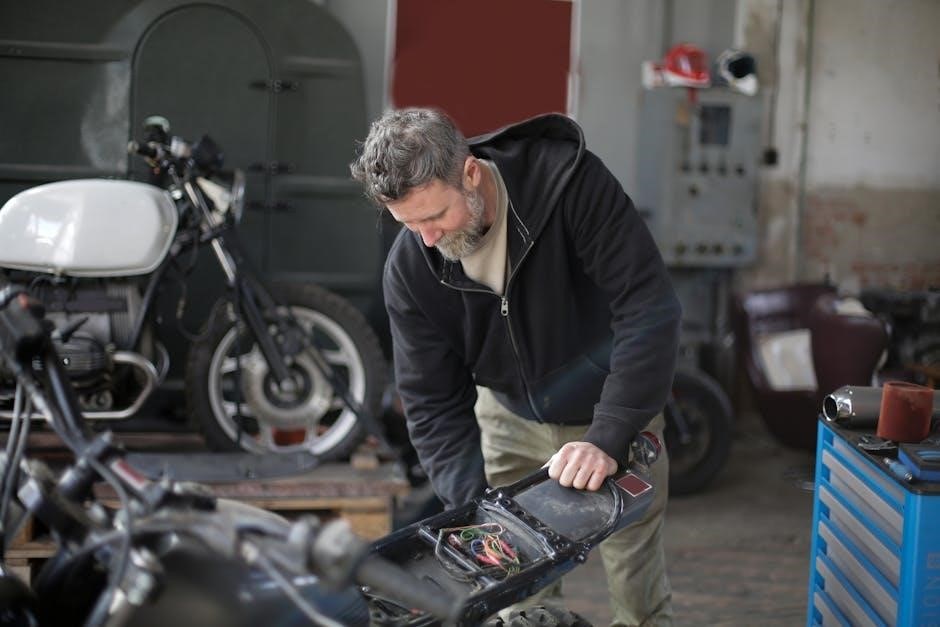The debate between electric choke and manual choke systems has long been a topic of interest for car enthusiasts and mechanics. Both systems serve the same purpose but differ in operation and practicality. This article aims to explore the mechanisms, advantages, and popular models of each type, providing a comprehensive understanding to help readers make informed decisions. Whether you prioritize convenience or control, this guide will cover it all.

Overview
The electric choke and manual choke are two distinct systems used to regulate airflow in carbureted engines, ensuring proper fuel-air mixture during engine startup and warm-up. Both systems aim to enrich the fuel mixture when the engine is cold, but they differ significantly in operation, reliability, and driver involvement. The electric choke is an automatic system that relies on an electric current and a thermostat to gradually open the choke valve, providing a hands-off experience for the driver. In contrast, the manual choke is a mechanical system controlled by a cable or lever, allowing the driver to manually adjust the choke plate as needed.
Electric chokes are widely used in modern vehicles and are known for their convenience and ease of use. They are particularly popular in applications where simplicity and reliability are prioritized. On the other hand, manual chokes are often preferred by enthusiasts and drivers who value precision and control. These systems are commonly found in older vehicles or performance-oriented setups where fine-tuning is essential. The debate between electric and manual chokes has sparked discussions among car enthusiasts, with each side highlighting its own advantages and disadvantages.
Key differences between the two systems include their operation, maintenance requirements, and driver interaction. Electric chokes are generally more user-friendly but may lack the adjustability of manual systems. Manual chokes, while requiring more effort, offer greater control over the fuel-air mixture, which can be beneficial in specific driving conditions. Understanding these differences is crucial for drivers and mechanics alike, as it impacts both performance and overall driving experience.
Historical Context
The evolution of the electric choke and manual choke systems is deeply rooted in the history of automotive engineering. The manual choke has its origins in the early days of carbureted engines, where drivers needed a way to manually enrich the fuel-air mixture to start and warm up cold engines. This system was simple in design, relying on a mechanical cable or lever connected to the choke valve. Drivers would pull the lever to close the choke, creating a richer fuel mixture needed for cold starts. As engines became more sophisticated, the manual choke remained a staple in many vehicles, particularly in performance and enthusiast circles, where driver control was valued.
In the mid-20th century, the electric choke emerged as an innovation aimed at simplifying the starting process. By incorporating an electric heating element controlled by a thermostat, the electric choke eliminated the need for manual adjustment. This advancement was part of a broader trend toward automation in vehicles, making cars more user-friendly for the average driver. The electric choke quickly gained popularity in production vehicles, as it reduced the complexity of engine operation and provided a more seamless starting experience.
Throughout the years, both systems have seen improvements, with the electric choke becoming more reliable and the manual choke retaining its appeal for precision and simplicity. The debate between the two has persisted, with each system finding its niche in different types of vehicles and driving scenarios. Today, the electric choke dominates in modern vehicles, while the manual choke remains a favorite among classic car enthusiasts and those who appreciate mechanical simplicity.
Purpose of the Article
This article aims to provide a comprehensive comparison between electric chokes and manual chokes, focusing on their mechanisms, advantages, and popular models. By exploring these aspects, the article seeks to help readers understand the differences and make informed decisions based on their specific needs. Whether you are a car enthusiast, a mechanic, or simply a driver looking to optimize your vehicle’s performance, this guide will offer valuable insights.

The article is designed to clarify the functionalities of both systems, addressing common questions such as how they operate, their pros and cons, and which models are widely recommended. It also highlights the historical context of these systems, shedding light on their evolution and their roles in modern automotive engineering. Additionally, the article will discuss real-world applications and user experiences, drawing from online forums and expert opinions to provide a well-rounded perspective.
Ultimately, the purpose of this article is to serve as a resource for anyone seeking to understand the nuances of electric and manual chokes. By breaking down complex technical details into accessible language, the article ensures that readers of all knowledge levels can benefit from the information provided. Whether you’re troubleshooting, upgrading, or simply curious, this guide will equip you with the knowledge to navigate the electric choke vs. manual choke debate confidently.

Electric Choke
An electric choke is an automotive component designed to regulate airflow in carburetors, ensuring proper engine performance during startup and warm-up. Unlike manual chokes, electric versions automatically adjust the choke plate, eliminating the need for driver intervention. This system is preferred for its convenience and ease of use, especially in modern vehicles. Electric chokes rely on a thermostat and timer to gradually open the choke plate, providing optimal fuel-to-air ratios as the engine warms up. Their simplicity and hands-free operation make them a popular choice for many drivers, though some argue they lack the fine control offered by manual chokes.
Mechanism
The electric choke operates through an automated process that eliminates the need for manual adjustment. At the core of its mechanism is a thermostat, which is typically located on the engine’s intake manifold. This thermostat senses the temperature of the engine and controls the choke plate’s position. When the engine is cold, the thermostat triggers the choke plate to close, enriching the fuel-to-air mixture to facilitate easier starting and faster warm-up.
The electric choke system includes a bi-metallic spring that responds to temperature changes. When the engine starts, the spring is in a compressed state, keeping the choke plate closed. As the engine warms up, the spring begins to expand, gradually opening the choke plate to reduce the richness of the fuel mixture. This process is also aided by a heating element, which accelerates the warming of the bi-metallic spring, ensuring a smooth transition from a rich to a lean mixture.
The system is further enhanced by a timer that ensures the choke plate opens at the correct rate, even if the engine temperature fluctuates. This prevents sudden drops in power or rough idling, which can occur with manual chokes if not adjusted properly. The electric choke’s mechanism is designed to provide consistent performance across various operating conditions, making it a reliable choice for drivers who value convenience and simplicity.
Advantages
The electric choke offers several advantages that make it a popular choice among drivers. One of its primary benefits is convenience. Unlike manual chokes, which require the driver to adjust the choke plate manually, the electric choke operates automatically, eliminating the need for driver intervention. This makes starting the engine faster and more straightforward, especially in cold weather conditions. The system’s thermostat ensures the engine receives the correct fuel-to-air mixture from startup, reducing the risk of stalling or rough idling.
Another significant advantage of the electric choke is its consistency. The bi-metallic spring and heating element work together to provide a smooth transition from a rich to a lean fuel mixture as the engine warms up. This consistency helps maintain optimal engine performance and prevents issues such as hesitation or stumbling during acceleration. Additionally, the electric choke’s automated mechanism reduces the likelihood of human error, which can occur with manual chokes if the driver forgets to adjust the choke plate properly.
The electric choke also offers improved reliability over time. Since it relies on electrical and thermal components, it is less susceptible to wear and tear compared to manual systems, which can degrade due to mechanical stress. Furthermore, the electric choke’s design allows for easier integration with modern fuel injection systems, making it a versatile option for a wide range of vehicles. Overall, the electric choke’s combination of convenience, consistency, and reliability makes it a strong choice for drivers seeking a hassle-free experience.
Popular Models
When it comes to electric and manual chokes, several models stand out for their performance, reliability, and popularity among drivers and enthusiasts. For electric chokes, the Holley Street Avenger series is widely recognized for its seamless integration and automatic operation. The Holley 4779, while primarily a manual choke model, is often upgraded to electric for its versatility and durability. Additionally, the ACDelco and Robertshaw electric chokes are well-regarded for their consistent performance and compatibility with a variety of carburetors.
On the manual choke side, the Carter AFB and Edelbrock Performer series are favorites among classic car owners and those who prefer more control over their engine’s operation. These models are known for their simplicity, ease of adjustment, and reliability in delivering the correct fuel-to-air mixture. The Holley 750AV, equipped with a manual choke, is also a popular choice for high-performance applications, offering precise control and a reputation for durability.
These models are celebrated for their ability to enhance engine performance, whether through the convenience of automation or the precision of manual control. Drivers often choose based on their specific needs, with electric chokes appealing to those who value ease of use and manual chokes favored by those who prefer hands-on control. Each model has its strengths, ensuring there’s a suitable option for every driver’s preferences and vehicle requirements.

Manual Choke
A manual choke is a traditional choice for carbureted engines, offering simplicity and cost-effectiveness. It allows drivers to control the choke plate manually, providing precise adjustment during engine warm-up. This system is favored by classic car enthusiasts for its reliability and ease of use. Manual chokes are often preferred in scenarios where direct control is beneficial, making them a popular option for drivers who value hands-on operation and mechanical simplicity.
A choke in a vehicle’s carburetor is designed to regulate the airflow entering the engine, ensuring proper combustion during startup and warm-up. The mechanism of an electric choke and a manual choke differs significantly in how they operate. An electric choke uses an electric heater to warm the bi-metallic strip inside the choke. As the strip heats up, it expands and gradually opens the choke plate, allowing more air to enter the carburetor as the engine warms up. This process is automated and controlled by a thermostat or a timer, making it more convenient for drivers.
In contrast, a manual choke relies on a cable connected to a lever or knob inside the vehicle. When the driver pulls the lever, the choke plate closes, restricting airflow and enriching the fuel mixture for easier cold starting. Once the engine begins to warm up, the driver can gradually open the choke by releasing the lever, allowing more air to flow. This manual process requires driver intervention and provides more direct control over the choke’s operation.
The electric choke’s mechanism is more modern and eliminates the need for manual adjustment, while the manual choke offers simplicity and reliability without relying on electrical components. Both mechanisms serve the same purpose but cater to different preferences and driving conditions. Understanding how each works is essential for choosing the right system for your vehicle.
The electric choke offers several advantages, primarily convenience and ease of use. Its automated operation eliminates the need for manual adjustment, making it ideal for drivers who prefer a hassle-free experience. The electric choke warms up quickly and ensures a smooth engine start, especially in cold weather. Additionally, it reduces wear on the engine by preventing over-revving during startup. The thermostat-controlled mechanism provides consistent performance, opening the choke plate at the optimal rate for proper warm-up. This feature is particularly beneficial for modern vehicles, where simplicity and reliability are prioritized.
On the other hand, the manual choke provides greater control and flexibility; Drivers can adjust the choke plate as needed, allowing for precise tuning of the air-fuel mixture. This is especially useful in vintage or modified vehicles, where customization is often desired. The manual choke also eliminates reliance on electrical components, making it more durable and less prone to failure. Furthermore, it allows drivers to open the choke earlier, reducing fuel consumption and emissions once the engine is warm. For enthusiasts who value hands-on control and simplicity, the manual choke remains a preferred choice.
Both systems have their strengths, catering to different driving styles and vehicle requirements. The electric choke excels in convenience and modern integration, while the manual choke offers precision and reliability for those who enjoy a more traditional approach to engine management.

When it comes to choosing between electric and manual chokes, several models stand out for their performance, reliability, and popularity among enthusiasts and mechanics. For electric chokes, the Holley 4779 is a classic choice, known for its durability and seamless integration with carburetors. It features a thermostat-controlled design, ensuring optimal engine warm-up and smooth operation. Another popular electric choke model is the BG 750AV, praised for its annular venturies, which enhance low-end performance while maintaining high flow rates. Additionally, the Edelbrock 1406 electric choke is a favorite among those seeking a balance between affordability and quality, offering consistent performance across various engine configurations.
On the manual choke side, the Holley 4779 again emerges as a top contender, particularly for its simplicity and adjustability. This model is often preferred by vintage car owners who value precision control over the air-fuel mixture. The Carter AFB series is another well-regarded option, known for its robust construction and ease of adjustment. Its manual choke design allows drivers to fine-tune the engine’s response, making it ideal for customized setups. Lastly, the Rochester Quadrajet is a timeless favorite, offering a manual choke system that is both reliable and easy to maintain. Its simplicity and durability have made it a staple in many classic vehicles.
These models represent the best of both worlds, catering to drivers who prioritize convenience and those who prefer hands-on control. Whether you opt for the modern convenience of an electric choke or the traditional appeal of a manual choke, these popular models ensure superior performance and reliability.